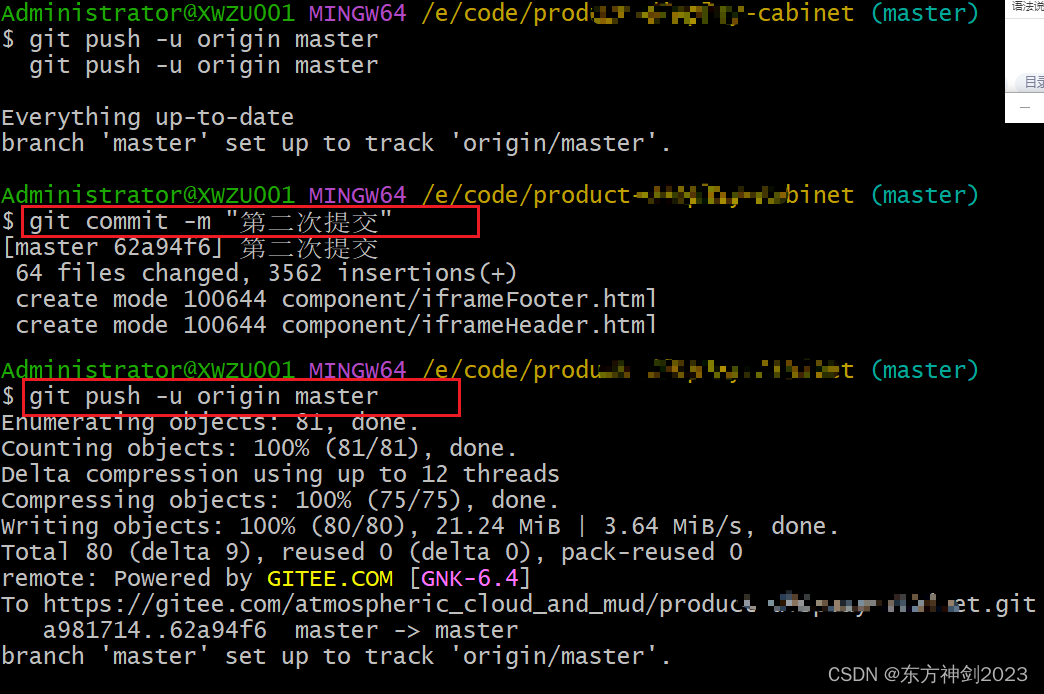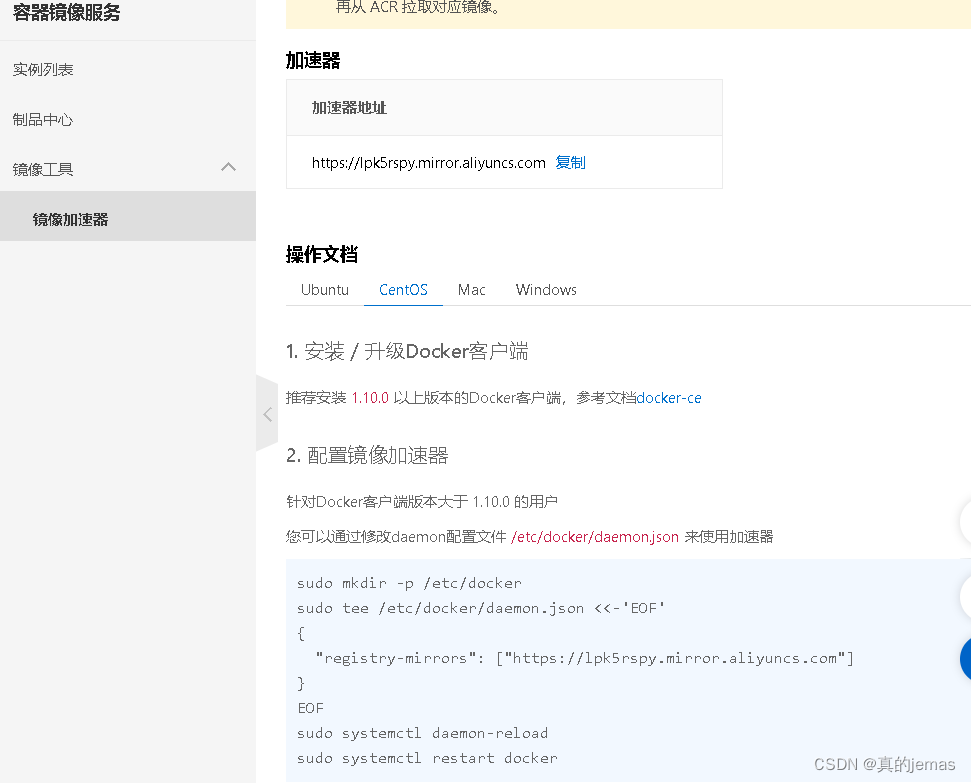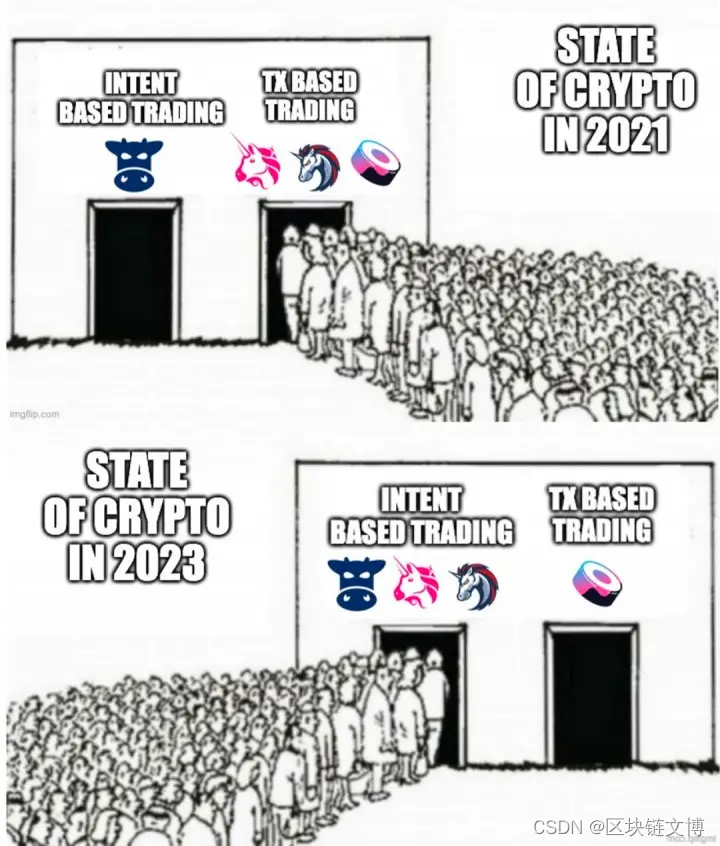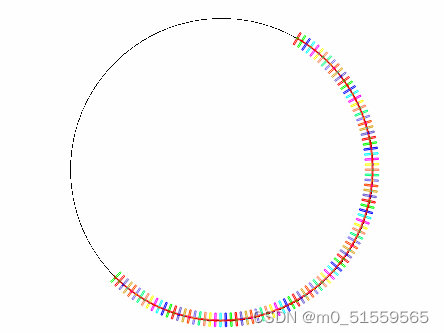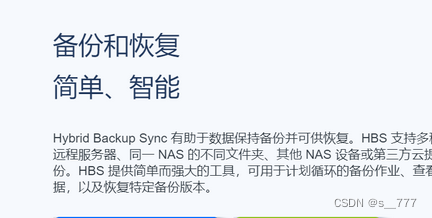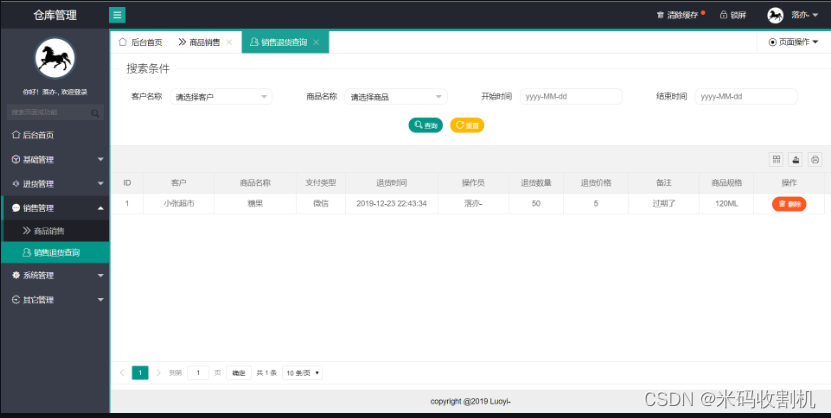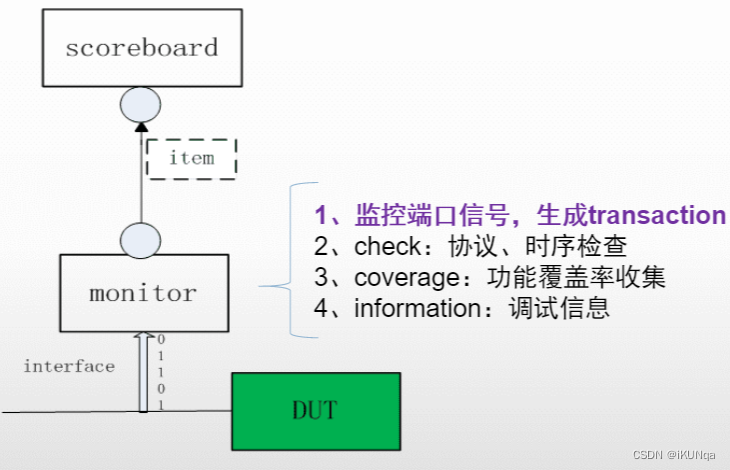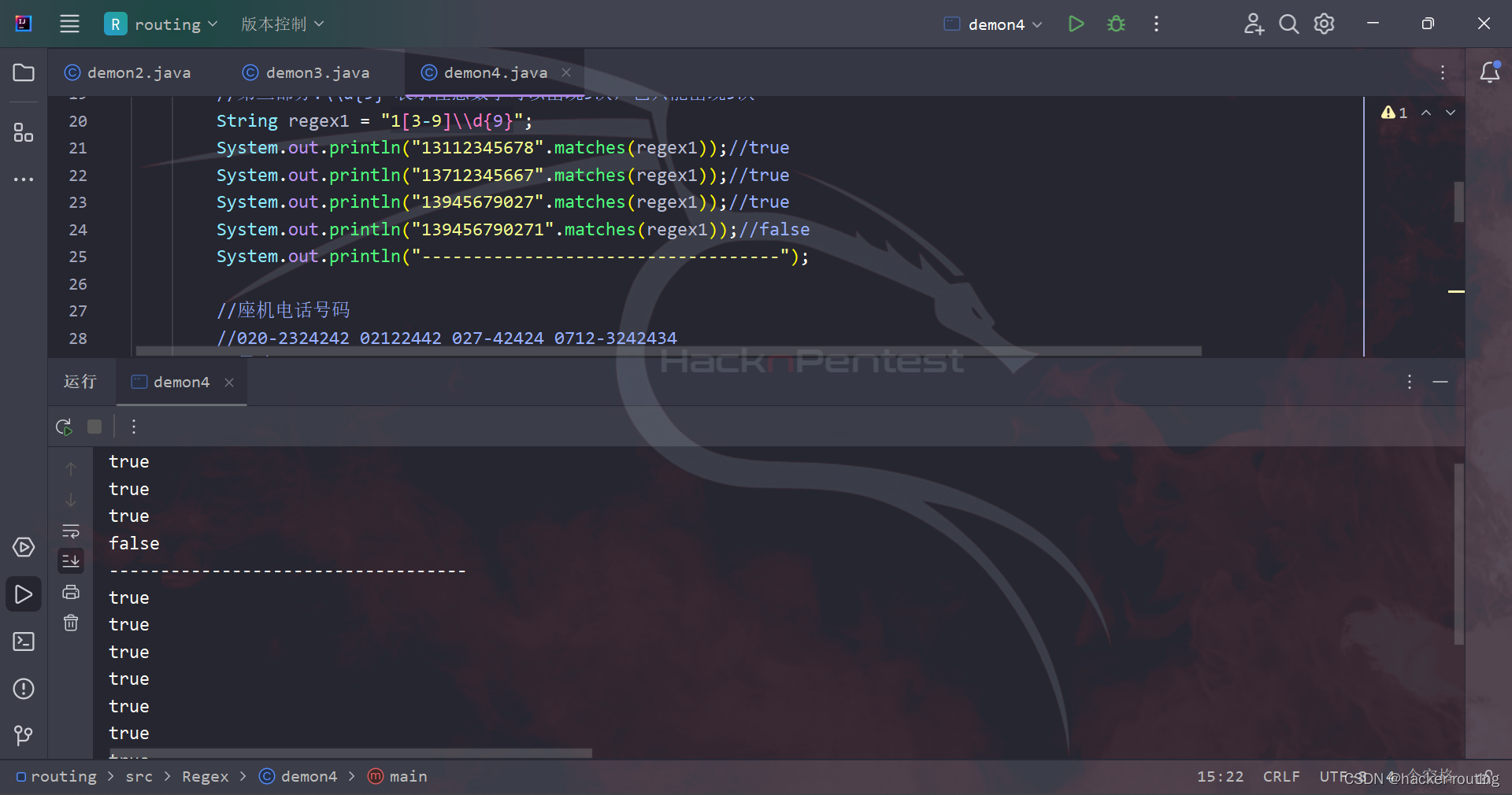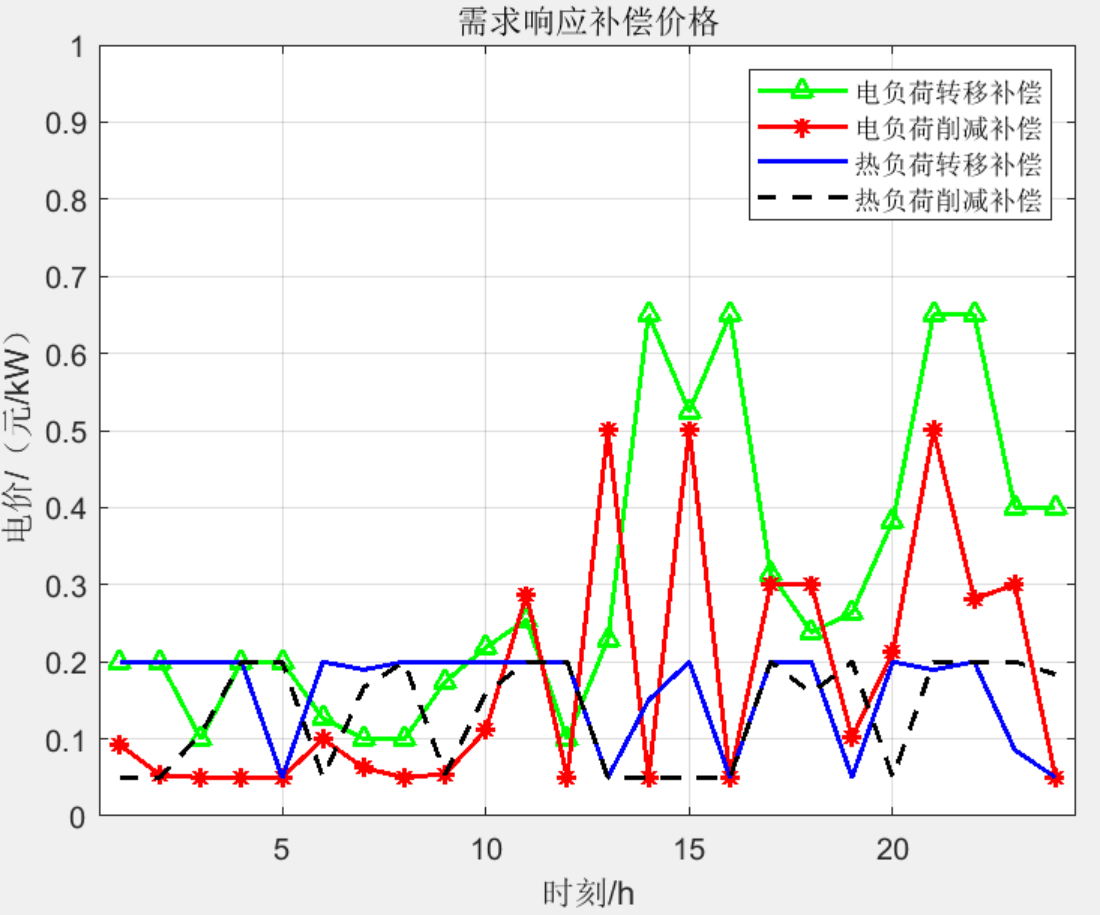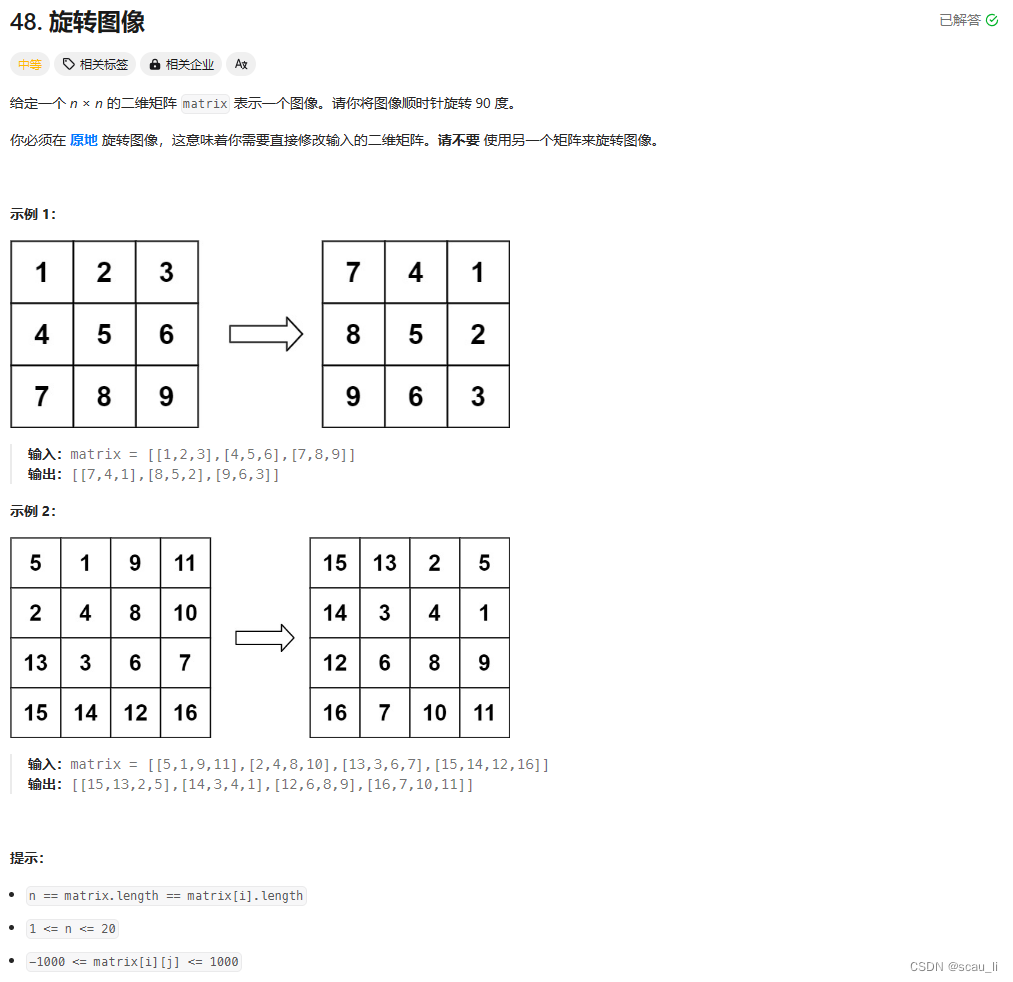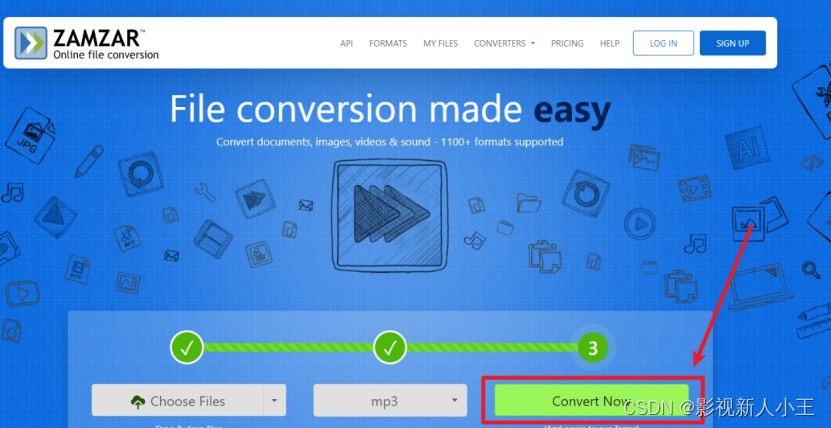目录
网络编程
1、概述
2、网络通信的要素
3、IP
4、端口
5、通信协议
6、TCP
文件上传
Tomcat
7、UDP
单方发送单方接受
双方发送接收
8、URL
URL测试
URL下载网络资源
网络编程
1、概述
信件:
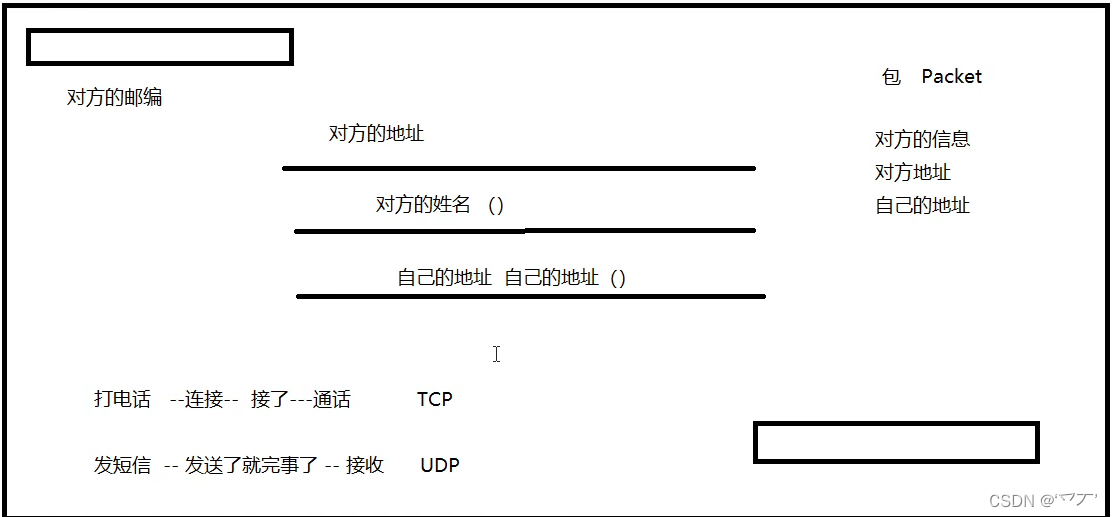
计算机网络:
计算机网络是指将地理位置不同的具有独立功能的多台计算机及其外部设备,通过通信线路和通信设备连接起来,在网络操作系统,网络管理软件及网络通信协议的管理和协调下,实现资源共享和信息传递的计算机系统。
网络编程的目的:
传播交流信息,数据交换,通信
想要达到这个效果需要什么:
-
如何准确的定位到一台主机。端口:定位到这个计算机上的某个资源
-
找到了这个主机,如何传输数据?
2、网络通信的要素
如何实现网络的通信?
通信双方的地址:
-
ip
-
端口号
规则:网络通信的协议
TCP/IP参考模型:
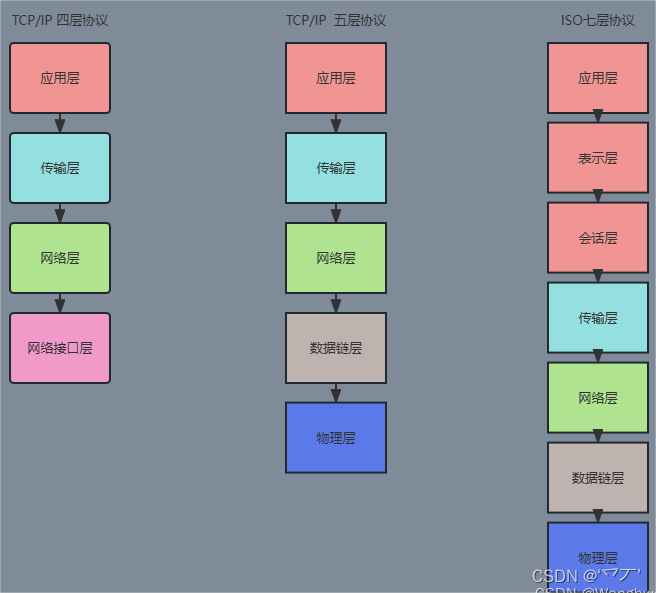
形象化记忆:
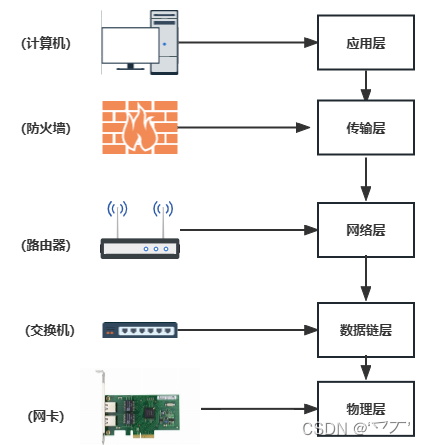
小结:
-
网络编程中有两个主要的问题
-
如何精准的定位到网络上的一台主机或者多台主机上
-
找到主机之后如何进行通信
-
-
网络编程中的要素
-
IP和端口号 IP
-
网络通信协议 UDP,TCP
-
3、IP
IP地址:InetAddress
-
唯一定位一台计算机
-
127.0.0.1:本机的localhost
-
ip地址的分类
-
IPV4/IPV6
-
IPV4127.0.0.1 ,四个字节组成,0~255,有42亿(30亿在北美,亚洲4亿,2011年耗尽)
-
IPV6:128位,8个无符号整数
2001:0bb2:aaaa:0012:1122:1acd:0000:1213//格式
-
-
公网(互联网)-私网(局域网)
-
ABCD类地址
-
192.168.xx.xx 专门给组织内部使用!
-
-
-
域名:记忆IP问题
-
IP:如www.vip.com
-
InetAddress类:
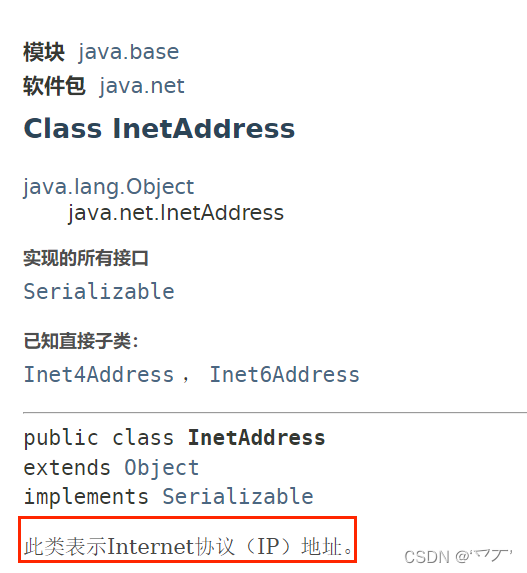
package com.study.lesson01;
import java.net.Inet4Address;
import java.net.InetAddress;
import java.net.UnknownHostException;
public class TestInetAddress {
public static void main(String[] args) {
try {
//查询本机地址
InetAddress inetAddress1 = InetAddress.getByName("127.0.0.1");
System.out.println(inetAddress1);
InetAddress inetAddress3 = InetAddress.getByName("localhost");
System.out.println(inetAddress3);
InetAddress inetAddress4 = InetAddress.getLocalHost();
System.out.println(inetAddress4);
//查询网站IP地址
InetAddress inetAddress2 = InetAddress.getByName("www.baidu.com");
System.out.println(inetAddress2);
//常用方法
//System.out.println(inetAddress2.getAddress());
System.out.println(inetAddress2.getCanonicalHostName());//规范的名字
System.out.println(inetAddress2.getHostAddress());//ip
System.out.println(inetAddress2.getHostName());//域名,或者自己电脑的名字
} catch (UnknownHostException e) {
e.printStackTrace();
}
}
}
4、端口
端口表示计算机上一个程序的进程:
-
不同的进程有不同端口号~用来区分软件
-
被规定0~65536
-
TCP,UDP:65535*2 单个协议下,端口号不能冲突!
-
端口分类
-
公有端口 0~1023
-
HTTP :80
-
HTTPS :443
-
FTP :21
-
Telent :23
-
-
程序注册端口:1024~49151,分配用户或者程序
-
Tomcat:8080
-
MySQL :3306
-
Oracle:1521
-
-
动态、私有:49152~65535
netstat -ano #查看所有的端口 netstat -ano|findstr "5900" #查看指定窗口 tasklist|findstr "8696" #查看指定端口的进程 Ctrl+shift+ESC #任务管理器快捷键
-
package com.study.lesson01; import java.net.InetSocketAddress; public class TestInetSocketAddress { public static void main(String[] args) { InetSocketAddress socketAddress = new InetSocketAddress("127.0.0.1", 8080); InetSocketAddress socketAddress2 = new InetSocketAddress("localhost", 8080); System.out.println(socketAddress); System.out.println(socketAddress2); System.out.println(socketAddress.getAddress()); System.out.println(socketAddress.getHostName());//地址 System.out.println(socketAddress.getPort());//端口 } } 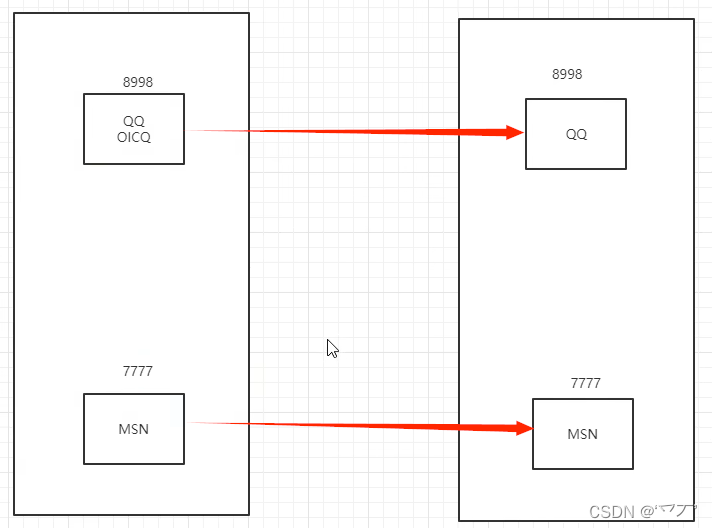
-
5、通信协议
协议:约定,就好比我们现在说的普通话~
网络通信协议:速率,传输码率,代码结构,传输控制...
TCP/IP协议簇:实际上是一组协议
重要:
-
TCP:用户传输协议
-
UDP:用户数据报协议
出名的协议:
-
TCP:用户传输协议
-
IP:网络互连协议
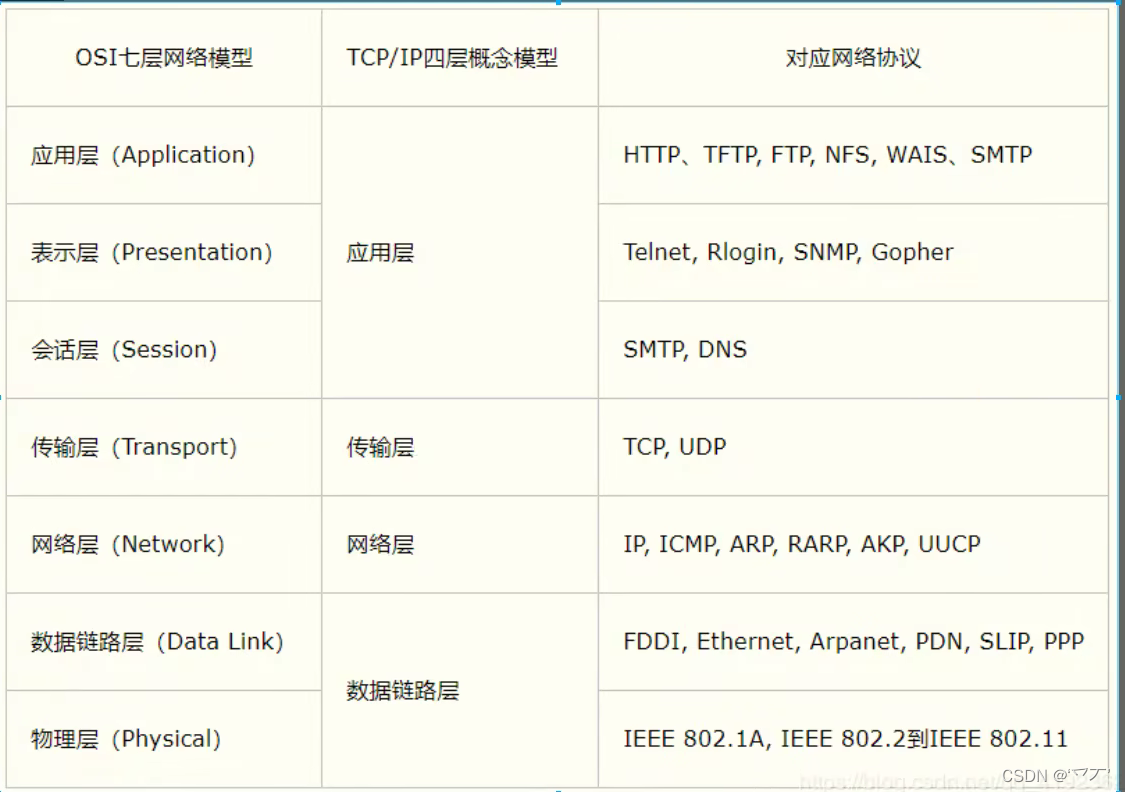
TCP、UDP 对比:
TCP:打电话
-
连接稳定
-
三次握手四次挥手最少需要三次,保证稳定连接 A:你瞅啥? B:瞅你咋的? A:干一场! A:我要走了~ B:你真的要走了吗? B:你真的真的要走了吗? A:我真的要走了~
三次握手、四次挥手
-
客户端、服务端
-
传输完成、释放连接
-
效率低
UDP:发短信
-
不连接、不稳定
-
客户端、服务端:没有明确的界限
-
不管是否准备好,都可以发送
-
DDOS:洪水攻击!(饱和攻击)
6、TCP
客户端
-
连接服务器Socket-->socket = new Socket(serverIp,port);
-
发送消息-->os = socket.getOutputStream(); os.write("欢迎来到网络编程".getBytes());
package com.study.lesson02;
import java.io.IOException;
import java.io.OutputStream;
import java.net.InetAddress;
import java.net.Socket;
import java.net.UnknownHostException;
import java.nio.charset.StandardCharsets;
//客户端
public class TcpClientDemo01 {
public static void main(String[] args) {
Socket socket = null;
OutputStream os = null;
try {
//1.要知道服务器的地址,端口号
InetAddress serverIp = InetAddress.getByName("127.0.0.1");
int port = 9999;
//2.创建一个socket连接
socket = new Socket(serverIp,port);
//3.发送消息IO流
os = socket.getOutputStream();
os.write("欢迎来到网络编程".getBytes());
} catch (Exception e) {
e.printStackTrace();
}finally {
if(os!=null){
try {
os.close();
} catch (IOException e) {
e.printStackTrace();
}
}
if(socket!=null){
try {
socket.close();
} catch (IOException e) {
e.printStackTrace();
}
}
}
}
}
服务器
-
建立服务的端口ServiceSocket-->serverSocket = new ServerSocket(9999);
-
等待用户的连接 accept-->socket = serverSocket.accept();
-
接受用户的消息-->is = socket.getInputStream();
-
管道流存储输出-->baos = new ByteArrayOutputStream(); byte[] buffer = new byte[1024]; int len; while((len=is.read(buffer))!=-1){ baos.write(buffer,0,len); } System.out.println(baos.toString());
package com.study.lesson02;
import java.io.ByteArrayOutputStream;
import java.io.IOException;
import java.io.InputStream;
import java.net.ServerSocket;
import java.net.Socket;
//服务端
public class TcpServeDemo01 {
public static void main(String[] args) {
ServerSocket serverSocket = null;
Socket socket =null;
InputStream is = null;
ByteArrayOutputStream baos = null;
try {
//1.我得有一个地址
serverSocket = new ServerSocket(9999);
while (true){
//2.等待客户端连接过来
socket = serverSocket.accept();
//3。读取客户端消息
is = socket.getInputStream();
//管道流
baos = new ByteArrayOutputStream();
byte[] buffer = new byte[1024];
int len;
while((len=is.read(buffer))!=-1){
baos.write(buffer,0,len);
}
System.out.println(baos.toString());
}
/*
byte[] buffer = new byte[1024];
int len;
while((len=is.read(buffer))!=-1){
String msg = new String(buffer,0,len);
System.out.println(msg);
}
* */
} catch (IOException e) {
e.printStackTrace();
}finally {
//关闭资源
if(baos!=null){
try {
baos.close();
} catch (IOException e) {
e.printStackTrace();
}
}
if(is!=null){
try {
is.close();
} catch (IOException e) {
e.printStackTrace();
}
}
if(socket!=null){
try {
socket.close();
} catch (IOException e) {
e.printStackTrace();
}
}
if(serverSocket!=null){
try {
serverSocket.close();
} catch (IOException e) {
e.printStackTrace();
}
}
}
}
}
文件上传
服务器
package com.study.lesson02;
import java.io.*;
import java.net.ServerSocket;
import java.net.Socket;
public class TcpServeDemo02 {
public static void main(String[] args) throws Exception {
//1.创建服务
ServerSocket serverSocket = new ServerSocket(9000);
//2.监听客户端的连接
Socket socket = serverSocket.accept();//阻塞式监听,会一直等待客户端的连接
//3.获取输入流
InputStream is = socket.getInputStream();
//4.文件输出
FileOutputStream fos = new FileOutputStream(new File("receive.jpg"));
byte[] buffer = new byte[1024];
int len;
while((len=is.read(buffer))!=-1){
fos.write(buffer,0,len);
}
//通知客户端我接受完毕了
OutputStream os = socket.getOutputStream();
os.write("我接收完毕了~可以断开~".getBytes());
//关闭资源
fos.close();
is.close();
socket.close();
serverSocket.close();
}
}
客户端
package com.study.lesson02;
import java.io.*;
import java.net.InetAddress;
import java.net.Socket;
import java.net.UnknownHostException;
public class TcpClientDemo02 {
public static void main(String[] args) throws Exception {
//1.创建一个socket连接
Socket socket = new Socket(InetAddress.getByName("127.0.0.1"), 9000);
//2.创建一个输出流
OutputStream os = socket.getOutputStream();
//3.读取文件
FileInputStream fis = new FileInputStream(new File("Zombatar_1.jpg"));
//4.写出文件
byte[] buffer = new byte[1024];
int len;
while((len=fis.read(buffer))!=-1){
os.write(buffer,0,len);
}
//通知服务器,我已经结束了
socket.shutdownOutput();//我已经传输完毕~
//确定服务器接收完毕,才能够断开连接
InputStream inputStream = socket.getInputStream();
//String byte[]
ByteArrayOutputStream baos = new ByteArrayOutputStream();
byte[] buffer2 = new byte[1025];
int len2;
while((len2=inputStream.read(buffer2))!=-1){
baos.write(buffer2,0,len2);
}
System.out.println(baos.toString());
//5.关闭资源
fis.close();
os.close();
socket.close();
}
}
Tomcat
服务端
-
自定义-->S
-
Tomcat服务器-->S
客户端
-
自定义-->C
-
浏览器-->B
7、UDP
发短信:不用连接。需要知道对方的地址!
单方发送单方接受
发送消息
package com.study.lesson03;
import java.net.DatagramPacket;
import java.net.DatagramSocket;
import java.net.InetAddress;
import java.net.SocketException;
public class UdpClientDemo01 {
public static void main(String[] args) throws Exception {
//1.建立一个Socket
DatagramSocket socket = new DatagramSocket();
//2.建个包
String msg = "你好啊!服务器!";
InetAddress localhost = InetAddress.getByName("localhost");
int port = 9090;
//数据,数据的长度起始,,发送给谁
DatagramPacket packet = new DatagramPacket(msg.getBytes(), 0, msg.getBytes().length, localhost, port);
//3.发送包
socket.send(packet);
//4.关闭流
socket.close();
}
}
接收消息、
package com.study.lesson03;
import java.net.DatagramPacket;
import java.net.DatagramSocket;
import java.net.SocketException;
public class UdpServeDemo01 {
public static void main(String[] args) throws Exception {
//开放端口
DatagramSocket socket = new DatagramSocket(9090);
//接收数据包
byte[] buffer = new byte[1024];
DatagramPacket packet = new DatagramPacket(buffer, 0, buffer.length);
socket.receive(packet);//阻塞接受
System.out.println(packet.getAddress().getHostAddress());
System.out.println(new String(packet.getData(),0,packet.getLength()));
//关闭连接
socket.close();
}
}
循环发送
package com.study.ChatDemo01;
import java.io.BufferedReader;
import java.io.InputStreamReader;
import java.net.DatagramPacket;
import java.net.DatagramSocket;
import java.net.InetSocketAddress;
import java.net.SocketException;
public class UdpSenderDemo01 {
public static void main(String[] args) throws Exception {
DatagramSocket socket = new DatagramSocket(8888);
//准备数据,控制台读取System.in
BufferedReader reader = new BufferedReader(new InputStreamReader(System.in));
while(true){
String data = reader.readLine();
byte[] datas = data.getBytes();
DatagramPacket packet = new DatagramPacket(datas, 0, datas.length, new InetSocketAddress("localhost", 6666));
socket.send(packet);
if (data.equals("bye")){
break;
}
}
socket.close();
}
}
循环接收
package com.study.ChatDemo01;
import java.net.DatagramPacket;
import java.net.DatagramSocket;
import java.net.SocketException;
import java.nio.charset.StandardCharsets;
public class UdpReceiveDemo01 {
public static void main(String[] args) throws Exception {
DatagramSocket socket = new DatagramSocket(6666);
while(true){
//准备接受的包裹
byte[] container = new byte[1024];
DatagramPacket packet = new DatagramPacket(container, 0, container.length);
socket.receive(packet);//阻塞式接受包裹
//断开连接 bye
byte[] data = packet.getData();
String receiveData = new String(data,0, data.length);
System.out.println(receiveData);
if (receiveData.equals("bye")){
break;
}
}
socket.close();
}
}
双方发送接收
在线咨询:两个人都可以是发送方,也可以是接收方!
发送端:
package com.study.ChatDemo01;
import java.io.BufferedReader;
import java.io.IOException;
import java.io.InputStreamReader;
import java.net.DatagramPacket;
import java.net.DatagramSocket;
import java.net.InetSocketAddress;
public class TalkSend implements Runnable{
DatagramSocket socket = null;
BufferedReader reader = null;
private int fromPort;
private String toIp;
private int toPort;
public TalkSend(int fromPort, String toIp, int toPort) {
this.fromPort = fromPort;
this.toIp = toIp;
this.toPort = toPort;
try {
socket = new DatagramSocket(fromPort);
reader = new BufferedReader(new InputStreamReader(System.in));
} catch (Exception e) {
e.printStackTrace();
}
}
@Override
public void run() {
while(true){
try {
String data = reader.readLine();
byte[] datas = data.getBytes();
DatagramPacket packet = new DatagramPacket(datas, 0, datas.length, new InetSocketAddress(this.toIp, this.toPort));
socket.send(packet);
if (data.equals("bye")){
break;
}
} catch (IOException e) {
e.printStackTrace();
}
}
socket.close();
}
}
接收端
package com.study.ChatDemo01;
import java.io.IOException;
import java.net.DatagramPacket;
import java.net.DatagramSocket;
import java.net.SocketException;
public class TalkReceive implements Runnable{
DatagramSocket socket = null;
private int port;
private String msgFrom;
public TalkReceive(int port,String msgFrom) {
this.port = port;
this.msgFrom = msgFrom;
try {
socket = new DatagramSocket(port);
} catch (SocketException e) {
e.printStackTrace();
}
}
@Override
public void run() {
while(true){
try {
//准备接受的包裹
byte[] container = new byte[1024];
DatagramPacket packet = new DatagramPacket(container, 0, container.length);
socket.receive(packet);//阻塞式接受包裹
//断开连接 bye
byte[] data = packet.getData();
String receiveData = new String(data,0, data.length);
System.out.println(msgFrom +":"+receiveData);
if (receiveData.equals("bye")){
break;
}
} catch (IOException e) {
e.printStackTrace();
}
}
socket.close();
}
}
学生端:
package com.study.ChatDemo01;
public class TalkStudent {
public static void main(String[] args) {
//开启两个线程
new Thread(new TalkSend(7777,"localhost",9999)).start();
new Thread(new TalkReceive(8888,"老师")).start();
}
}
老师端:
package com.study.ChatDemo01;
public class TalkTeacher {
public static void main(String[] args) {
new Thread(new TalkSend(5555,"localhost",8888)).start();
new Thread(new TalkReceive(9999,"学生")).start();
}
}
8、URL
统一资源定位符:定位互联网上某一个资源~
协议://ip地址:端口/项目名/资源
URL测试
package com.study.lesson04;
import java.net.MalformedURLException;
import java.net.URL;
public class URLDemo01 {
public static void main(String[] args) throws MalformedURLException {
URL url = new URL("http://localhost:8080/helloworld/index.jsp?username=kuangshen&password=123");
System.out.println(url.getProtocol());//协议
System.out.println(url.getHost());//主机ip
System.out.println(url.getPort());//端口
System.out.println(url.getPath());//文件
System.out.println(url.getFile());//全路径
System.out.println(url.getQuery());//参数
}
}
URL下载网络资源
package com.study.lesson04;
import java.io.FileOutputStream;
import java.io.InputStream;
import java.net.HttpURLConnection;
import java.net.MalformedURLException;
import java.net.URL;
import java.net.URLConnection;
public class URLDown {
public static void main(String[] args) throws Exception {
//1.下载地址
URL url = new URL("https://m701.music.126.net/20240310184733/9ca3dc22ed39dd04044ede9b4ce9f672/jdyyaac/obj/w5rDlsOJwrLDjj7CmsOj/32103516877/3532/074b/bdea/4f512dfb86fec567b51062cc17695e22.m4a");
//2.连接到这个资源 HTTP
HttpURLConnection urlConnection = (HttpURLConnection) url.openConnection();
InputStream inputStream = urlConnection.getInputStream();
FileOutputStream fos = new FileOutputStream("a.m4a");
byte[] buffer = new byte[1024];
int len;
while((len=inputStream.read(buffer))!=-1){
fos.write(buffer,0,len);//写出这个数据
}
fos.close();
inputStream.close();
urlConnection.disconnect();
}
}




